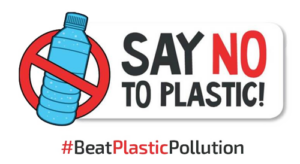WATER = LIFE
This basic thesis is known to everyone. But do we know the real facts about the quality of the drinking water we consume and are we aware of the risks?

More than half of the human body weight is water, 60% in adult men, 50% in women due to the higher percentage of body fat, and 70% in infants. Of this, 34% is extracellular water and 66% is intracellular water. Part of the water space outside the cell is located inside the vascular pathway, while the other part is outside the vascular pathway. Hydration is a basic necessity of our subsistence. How much water we need to drink daily to maintain our health is hopefully known to everyone, as there are countless health-conscious forums dealing with the topic, for example, you can scientifically calculate your own needs on the here linked site.
The tragic condition affecting nearly 2 billion of our fellow human beings in underdeveloped, water-scarce regions of the world is not only the primary source of contemporary migration, but is also responsible for wars in the region and causes the deaths of around a thousand children under the age of five every day (UNICEF 2023 data). The world’s leading forces and the UN do not seem to be really trying to solve this problem, at least outside NGOs, there is not much activity in this area to end the water crisis, even though there is technology and money available. But this will be the material for a future article.
Fortunately for some of us, it is natural to open the tap and drink good-tasting, healthy water. However, for most people, where this is not available, an alternative source of drinking water is needed. For people living in affluent societies (Western civilization), the solution is to consume bottled drinking water or mineral water. We take this ultimate solution for granted and we are used to it: that is, we can afford those few Euros, we drink from PET bottles without any dubt and trust the given brand’s quality.
Thanks to environmentalists, we now care about the environmental impact of plastics, but we hardly care what kind of water we actually get for our money in bottles or taps. Unfortunately, the situation is not too rosy, we just don’t know about it… And what we don’t know doesn’t hurt!? Or maybe it would be worth thinking about! For example, the issue of air pollution cannot be swept under the carpet due to the high publicity – as a result, people have become aware of the danger of air pollution and its harmful effects on health, which has been compensated by new technologies (e.g. catalytic converters) and significantly tightened legislation. But what about drinking water, which according to the profession is the most strictly controlled food? There are EU and national standards for drinking water, drinking water safety legislation, WHO recommendations, mineral water code, etc., which deal with chemical components, permissible limit values (e.g. arsenic, nitrate, lead content) and organic and inorganic contamination parameters. As a deterrent example, I mention that the use of many carcinogenic pesticides used in Hungary is legal, so 36 types of organophosphoric acid esters (active ingredients), 17 types of halogenated alkaloids, and 9 types of dithiocarbamates are allowed!
In order to comply with legislation, authorities and manufacturers only check those water quality parameters that are prescribed. There are also strong lobbying interests in ensuring that no one digs deeper into water quality, yet – thanks to the free flow of information – shocking figures emerge such that, for example, at least 30% of the EU’s surface water and groundwater resources are contaminated with toxic compounds that never degrade https://www.eea.europa.eu/en/european-zero-pollution-dashboards/indicators/treatment-of-drinking-water-to-remove-pfas-signal.

Well-known substances and their compounds from Mendeleev’s table, which are spectacularly detectable above the health limit or cause immediate trauma, are strictly scrutinized. Accredited laboratories carry out targeted testing for these and the organic and inorganic impurities already mentioned and issue certificates of conformity for drinking water. But what about the compounds, drug residues, hormones that have been left out of regulation and testing? Unfortunately, modern man’s “scientific knowledge is last as long as the resolution of the microscope,” and it is difficult to overwrite scientific dogmas accordingly.
In recent years, more and more scientific research has leaked out, confirming the presence of at least 400 types of compounds that are seriously harmful to health. They quietly and slowly exert their harmful effects on health, for example, by building into DNA, causing cancer, permanent neurological problems… Of course, even if those in charge addressed the problem, there would still be no affordable technology to filter them. This trouble has been caused by “science” and modern man, and information is now being silenced by the global business interests of our modern age. The problem is systemic and no solution is expected anytime soon, either from universal utilities or from global corporations dominating water trade.
However, we can do our own work to reduce the health risks from drinking water. Did you know that drinking water extracted from air vapor is surface or underground Does it contain significantly less impurities and substances harmful to health compared to water sources? For a family or small community, atmospheric water generator technology is already available by AWG-Europe Ltd. company’s webshop range, which not only converts atmospheric vapor into drinking water, but also combines compact and ultramodern water treatment technology with a household hot and cold water dispenser. Let’s take care of our health and think that we don’t have to carry plastic bottles anymore!
